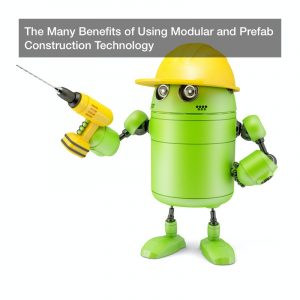
There is no doubt that the construction industry is one of the largest and most important in the entire world, and in the United States alone, the construction industry is worth over $1 trillion overall. Construction firms big and small pool their resources and manpower on projects of all sorts, to make office buildings, houses, hotels, schools, banks, shopping malls, and much more. Construction zones are a familiar sight, but compared to modular office buildings and prefab construction methods, they are inefficient. Modern inplant offices and warehouse offices are much more convenient for plant managers, and only modular construction methods can make these inplant offices a reality. And it’s not just mobile offices; modular prefab rooms can be built for skyscrapers and hotels, too, and a fully prefab room can be easily set into place on a partially complete skyscraper or office. How does this work? What are the benefits of using this innovative construction method?
How Modular Technology Works
Modular construction methods differ somewhat from regular construction projects, and this makes them more efficient overall. A modular room is not built out in the open at a project site; rather, it is constructed indoors in a factory, and this shields the project and the workers alike from the elements. What is more, these modular prefab construction methods also save time, and they are much more resource-efficient, too, allowing a lot of leftover or scrap material to be reclaimed with ease. Regular construction sites often require junk removal services to haul away excess scrap, but that’s not an issue with modular construction.
According to the Building Industry Association of Philadelphia, for example, modular construction can reduce overall material wastes by 9-20%, and some projects may save even more. The UK-based WRAP (Waste and Resources Action Programme) says that some materials may see as much as 90% waste reduction when modular technology is used. The likes of brick, timber, concrete, wood pallets, shrink wrap, and cardboard may enjoy these sort of savings. After all, many industries today are looking to reduce resource waste both to save money and protect the natural environment, and modular construction can go a long ways in that regard.
A prefabricated inplant office or warehouse office will be built indoors, then shipped to the client and placed wherever it is needed in a factory or warehouse. In fact, these inplant offices are not even permanent; they can be moved around, and placed anywhere where there is enough room, and they may vary in size and materials. Meanwhile, more permanent rooms are easily made this way too, such as offices for a skyscraper or hotel rooms. These modular rooms are fully fabricated, including water and electricity utilities, so they are quick to install once they arrive on the site. They are also low-maintenance for a long time after that.
Surveys and studies show just how popular this convenient and efficient construction method can be. In 2017, Marriott International pledged to use such technology for 13% of all its North American projects, and in 2011, another survey showed how many commercial projects involved modular rooms. Around 49% of all survey respondents said that they used prefab, modular tech to make healthcare facilities, and 42% used it to make college dorms and buildings while 42% also used it to make manufacturing sites (such as factories). Similarly, roughly 90% of engineers, 84% of contractors, and around 76% of surveyed architects said that they use prefab and modular construction methods for at least some of their projects, if not all.
Warehouse Solutions
A warehouse is no ordinary building; inside, warehouses tend to favor mobile and non-permanent walls, rooms, and partitions. This allows the crew to adjust the warehouse as needed for all kinds of stock and inventory in any amount, and prefabricated walls and offices are vital for this effort. Entire rooms can be set up just about anywhere and taken down again just as easily, and those prefab walls come with features such as doors and windows. A mobile office, as mentioned earlier, can be easily placed in the middle of the work zone, so the manager can easily see everything that’s going on and allow the workers to visit them with ease.
